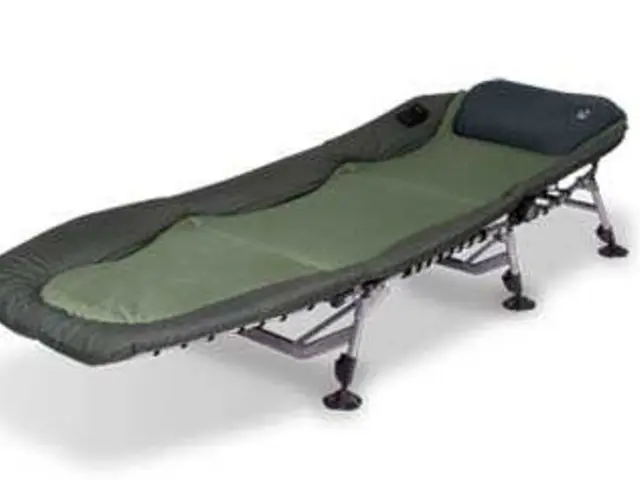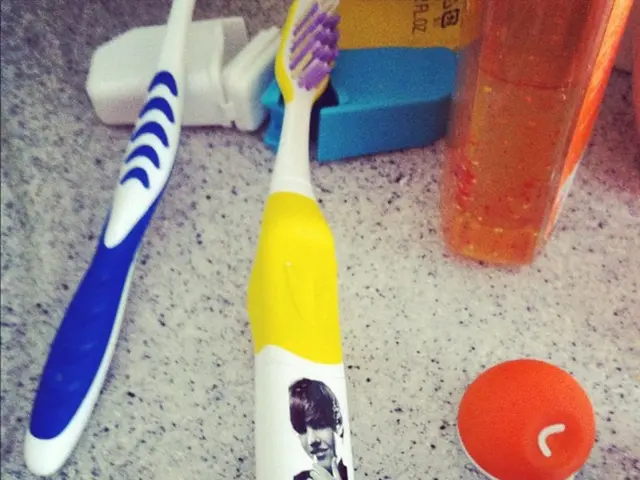Mastering the Art of Foam Rolling: A Guideline for Experts and Novices Alike
Get the lowdown on foam rolling, a popular fitness tool that offers many benefits. This versatile device can help you ease tightness, increase blood flow, and improve your mobility, whether you're warming up for a workout or unwinding after a long day. But to fully take advantage of your foam roller, it's essential to know what you're doing to get the most bang for your buck. Here's a crash course on effective foam rolling and how to avoid common pitfalls.
Foam rolling is a fantastic way to reduce tension, boost circulation, and enhance mobility, both before and after workouts. By applying pressure to your muscles, you're breaking up any adhesions that might have built up over time. These adhesions are tiny sticky spots within the muscle tissue that can restrict your movement patterns. Foam rolling also promotes blood flow and circulation to the affected areas, which can be incredibly beneficial for delivering fresh oxygen and nutrients to your muscle tissue.
Many people make common mistakes when foam rolling, such as racing through it, zoning out, or focusing on the wrong areas. To reap the best rewards from your foam roller, remember that slow and steady wins the race. Dedicate time to pressing into tender spots and holding the pressure, rather than quickly moving over your muscles.
Regularity is key when it comes to foam rolling. Consistency is crucial to helping prevent any posture-related or movement-related issues that may arise from neglecting your muscles. Make foam rolling part of your daily routine, even when you don't feel sore, to maintain optimal mobility and flexibility.
Avoid rolling over bones, ligaments, or joints when foam rolling. Stick to soft tissue areas such as your calves, quads, glutes, and lats. Applying too much pressure can be counterproductive, so focus on finding an intensity level that you can breathe through. This technique will help create a release in your muscles, providing a much more comfortable and effective foam rolling experience.
So, where should you focus your foam rolling efforts? Start with your feet and calves, as they play a significant role in both mobility and postural issues. Your glutes are another crucial area to target, as they impact movement patterns and can help counteract the effects of prolonged sitting or heavy lower-body training.
Here are common FAQs about foam rolling and their answers:
What is foam rolling good for?Foam rolling helps reduce tension, improve circulation, and support smoother movement.
How do I use a foam roller?Start by selecting the appropriate density roller for your needs, either low- to medium- or high-density. Position the roller under the targeted muscle and move slowly at a pace of around 2–3 inches per second. Adjust the method based on the muscle — roll along the length of the muscle for warmups, or focus on separate sections and hold pressure for post-workout recovery. Remember: Don't rush!
How effective are foam rolling workouts?Martinez says that you may start seeing benefits within a few sessions, with the main results being neurological adaptations from improved muscle tolerance to pressure. Over time, with regular use, foam rolling can help increase pliability, body awareness, and tolerance to pressure, making movement more fluid and less restricted.
What routines should I use pre- and post-workout?Pre-workout, focus on quick movements to prime the muscles for activity, such as rolling the quads, hamstrings, and calves. Post-workout, spend more time on any tight or tender spots to release adhesions, increase circulation, and reduce soreness. Additionally, pay attention to specific sections of muscles by breaking them into thirds.
Top Takeaways:
- Foam rolling can effectively reduce tension, improve circulation, and support smoother movement.
- Use a low- to medium-density foam roller, and focus on areas that feel tight or tender.
- Aim for 30–60 seconds on each muscle group, stopping and holding over particularly tight spots before moving on.
- Listen to your body, and don’t push through excessive pain.
- Consistency is essential for maintaining results. Aim to foam roll 2–3 times per week for best results.
- GQ recommends incorporating a low- to medium-density foam roller into your fitness-and-exercise routine to reap its benefits in health-and-wellness, as it can help reduce tension, improve circulation, and support smoother movement (source: common FAQs about foam rolling and their answers).
- For an effective pre-workout routine, focus on quick movements to prime the muscles with a foam roller, such as rolling the quads, hamstrings, and calves (source: common FAQs about foam rolling and their answers).
- In addition to its fitness-and-exercise applications, science indicates that foam rolling can provide long-term benefits, including increased pliability, body awareness, and tolerance to pressure, making movements more fluid and less restricted (source: common FAQs about foam rolling and their answers).







